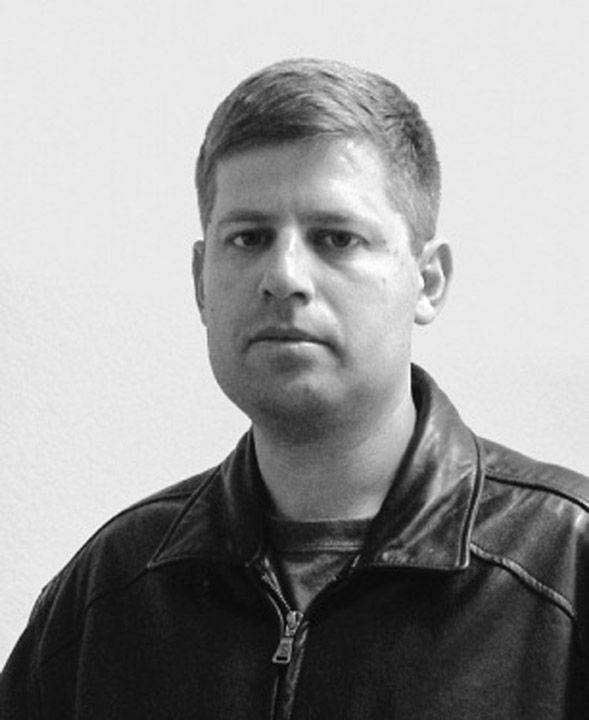 Courtesy of Allied Integrated Marketing
Courtesy of Allied Integrated MarketingThe Daily Aztec: The film draws a lot of comparisons to “The Blair Witch Project,” stylistically was that your biggest influence?
Oren Peli: It was definitely an influence. “Blair Witch” is the most successful movie that employed this kind of style, the cinema variety mockumentary style, but I’ve been a fan of that even before since “Spinal Tap.” But “Blair Witch” definitely showed that if it’s done right with good acting and good writing and good editing, that type of movie can actually be very commercially successful.
DA: Your movie is receiving a lot of reviews saying it’s one of the scariest movies of all time.
As a filmmaker making a film with a budget like you did, how do you respond to
that type of praise?
OP: Well it’s definitely very flattering. I knew that I was trying to make a movie that was very scary. I didn’t think people would say it’s the scariest movie of all time, but it’s definitely very flattering. I think one of the reasons people say that is because we’re playing on people’s fears when they’re asleep at night, when people are most vulnerable. I think that’s what people mostly respond to.
DA: The dialogue in this movie was mostly improvised from a scene outline. Why did you choose to make the movie this way instead of sticking with a straight script?
OP: For this kind of a movie to work when it’s supposedly a documentary, one of the most important things to do is to create performances that are very natural so it doesn’t look like the actors are reading lines or memorizing lines. So I knew from the very beginning that once we had actors that can pull it off, which was not easy to find, we want to make sure that they can speak freely and naturally. So we give them a little bit of an idea of what the scene is and a little bit of guidelines, but by having them come up with their own dialogue we were able to make sure that everything feels very natural in the setting and doesn’t feel like it’s some sort of a scripted, theatrical performance.
DA: Why are there no credits for this film at this time?
OP: We thought that having credits won’t really help the movie. We thought this may in a way even kind of take away from the experience. And just wanted, you know, once we have the final shot of the movie to end the movie as quickly as possible and get it over with.
DA: Did you know the movie was going to be that scary while you were making it, and was that a concern of yours?
OP: It wasn’t a concern. It was something I was hoping would happen. But I didn’t, I had no idea that it would get the kind of reaction that it did. So it definitely exceeded my expectations.
But I knew that by placing the setting of, you know, all the scary things that are happening in the peoples’ bed, in their bedroom, that’s the one thing that you can’t really escape. And, you know, after people watch The Blair Witch Project people said, you know, “I’m never going to go camping again.” Or after Jaws people said, “I’m never going to go swim in the ocean.”
But if you set up the setting for all the horrific things in someone’s bedroom then that’s what you’re going to be thinking about when you’re lying in bed trying to fall asleep.
DA: You shot the movie in seven days. Do you ever think in retrospect that you could have filmed longer or do you feel like that was sufficient?
OP: Actually, things went surprisingly smoothly during the shoot. We had a couple of re-shoots after that to pick up a couple of extra scenes … I mean if I needed more time I would have used more time. So we got pretty much most of what we needed when we needed it.
DA: Who are your biggest influences for directing?
OP: (Alfred) Hitchcock was definitely was one. I would say another one is probably M. Night (Shayamalan) because his style is also kind of more of a slow build and paying attention to the acting and the – and the story rather relying on heavy special effects. In a weird way even Rob Reiner, who I love as a director for the non-horror stuff. But in a movie like Misery, that’s another great example of a movie that has very slow build, it’s self-contained in mostly one location. So that would be another good influence.
DA: What would you say was the most enjoyable part of making this film?
OP: That’s, that’s a toss up between shooting &-&- the shooting was a lot of fun because the actors were so good and things were mostly flowing. That was a lot of fun, but at the time I was too stressed to enjoy it. But later on editing was a lot of fun. That was kind of like piecing it all together and seeing the whole movie come to life. So that was very rewarding.
DA: Did you expect the film to grow as exponentially as it has in the recent months and
was that a surprise to you?
OP: I thought that it would probably do well because we’d seen in previous screenings that it gets really good word of mouth. So we knew it was going to do well. But I don’t think anyone predicted it was going to be this, it was going to do this well. We didn’t know that the fans were going to embrace it to the level that they did which now has put it in a whole new category as far as the studio is concerned. And we’re seeing the movie expanding from one weekend to the other and that’s all thanks to the words of mouth being spread by the fans.
DA: I understand that there’s a little bit of controversy surrounding different endings that were shot for the film. I know you shot an original ending but then a new ending was shot for the new theatrical release. Do you have any comments as far as whose decision that was and whether or not you’d rather have the original ending?
OP: I liked the original ending personally, but that’s one of the things that a lot of people liked it, but we also had a lot of people that didn’t dig it at all. So we knew it’s a sticking point and we decided to experiment with a couple of different endings. And one of the endings that we experimented with was the one suggested by Spielberg and interestingly enough he knows a thing or two about movies and that’s the ending that like went, you know, so well in test screenings. And people loved it and you know, every time when I see the movie with an audience it gets a huge reaction. So after that there was no question about which ending we were going to use.
DA: What were some of the complications that you ran into actually getting this movie released?
OP: Once we got DreamWorks onboard things were going well. The thing that kind of slowed us down the most was the fact that the DreamWorks and Paramount had a divorce last year. So when we were going through that a lot of things were on hold and the movie was in limbo for a few months.
DA: Aside from fan response and the praises that your film is receiving right now, what is your ultimate goal for this movie?
OP: For now I’m just happy that the fans are getting a chance to watch the movie and that they’re enjoying it. And as the movie continues to get the good word of mouth and keeps
expanding in more theaters I just hope that everyone that wants to see the movie gets a chance and hopefully they’ll enjoy it and tell a friend.
DA: Could you talk a little bit more about Paramount’s marketing plan and how audiences are demanding the movie and how that’s working out for the film?
< strong>OP: Yes. So far it seems to be working out very well. Paramount knew that you can’t really release this movie in a standard type of a way because there’s really not a whole lot you can show in the trailer and you don’t have any star power behind it.
So they didn’t want to just throw a lot of money into it and frankly didn’t even know how fans were going to respond to it. So they figured the best way to just put it out there slowly, you know, release it and let fans be in control of deciding if they want to see it or not and where they want to see it. So, you know, no one really knew how it was going to work out, but when the fans started, you know, really embracing the movie and the whole “demand it” system and asking for the movie to play in their cities then Paramount kept expanding it. And so far it seems like it’s working very well.
DA: What constraints did you face with the limited budget?
OP: Basically a lot of them and most of them I ended up using for my advantage. For example, I couldn’t afford any CGI and I didn’t really want to do much CGI so all the special effects had to be very simple and practical and things that I can do on my own. Other things like not having a crew, not having a lighting person, not having a cinematographer ended up pretty much making sense because in real life Micah would not have a cinematographer, he would just shoot things the way they are. So for the premise of the movie kind of made sense and I turned it into an advantage.









